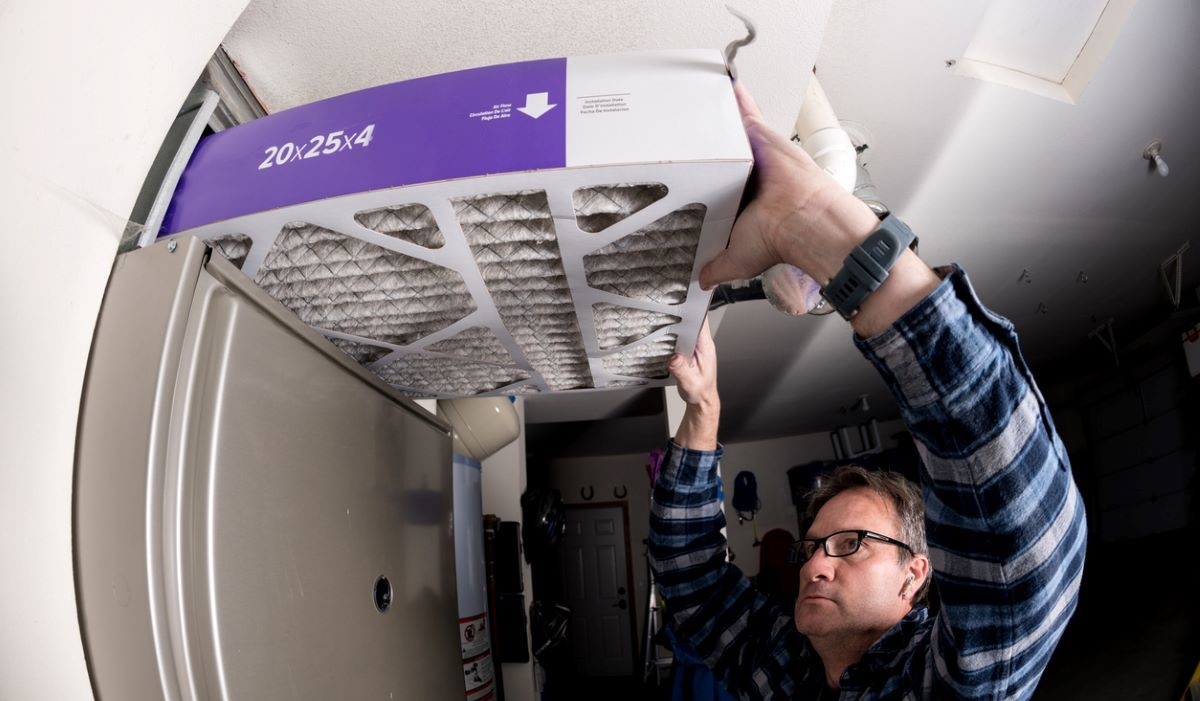
How can you check your air filter’s MERV rating and pressure drop?
The term MERV (Minimum Efficiency Reporting Value) rating system is a tool used to measure the overall effectiveness of an air filter. This rating system was originated by the American Society of Heating, Refrigerating, and Air-Conditioning Engineers (ASHRAE).
The MERV scale ranges start from 1 to 16. The higher the MERV rating, the more effective the air filter captures larger particles of airborne contaminants.
- MERV 1 to MERV 4 filters are typically used in residential settings and can capture large particles (dust, pollen, and pet dander).
- MERV 5 to MERV 8 filters are often used in commercial settings and can capture smaller particles such as mold spores and dust mites.
- MERV 9 to MERV 12 filters are typically used in industrial settings and can capture smaller particles such as bacteria and viruses.
- MERV 13 to MERV 16 filters are typically used in hospitals and can capture tiny particles such as smoke and chemical fumes.
The MERV rating system is a valuable tool for determining the overall effectiveness of an air filter. To ensure that your air filter is working effectively, it is vital to regularly check the MERV rating and choose a filter with the appropriate level of filtration for your needs.
What’s the Pressure Drop in the Air Filter?
The pressure drop in the air filter is essential when choosing an air filter for your home. A low-pressure drop means that the filter is not doing its job of trapping particulates and may need to be replaced more frequently. A high-pressure drop indicates that the filter restricts airflow and may cause your furnace to work harder and use more energy.
How To Check Pressure Drop in the Air Filter?
There are a few ways to check the pressure drop in your air filter.
- One way to check the pressure drop in your air filter is to use a manometer. It is a device that measures the pressure difference between two points. To use a manometer, you will need to attach one end of the manometer to the outlet side of the filter and the other to the inlet side. The reading on the manometer will tell you the pressure drop across the filter.
- Another way to check the pressure drop in your air filter is to use a differential pressure gauge. It mainly measures the difference in pressure between two points. To use a differential pressure gauge, you must attach one end of the gauge to the outlet side of the air filter and the other to the inlet side. The reading on the gauge will tell you the pressure drop across the filter.
If you are checking the pressure drop in your air filter for the first time, it is important to check both the inlet and outlet sides of the filter. This will ensure that you are getting an accurate reading. When checking the pressure drop in your air filter, it is essential to note that it will vary depending on the filter you use. For example, a pleated air filter will have a higher pressure drop than a non-pleated air filter.
If you are unsure how to check the pressure drop, you can always contact the manufacturer of your air filter for assistance. They will be able to provide you with the information you need to ensure that your air filter is working properly. So, when choosing an air filter, it is essential to select one that is appropriate for the needs of your home or business.
Photo: iStock








